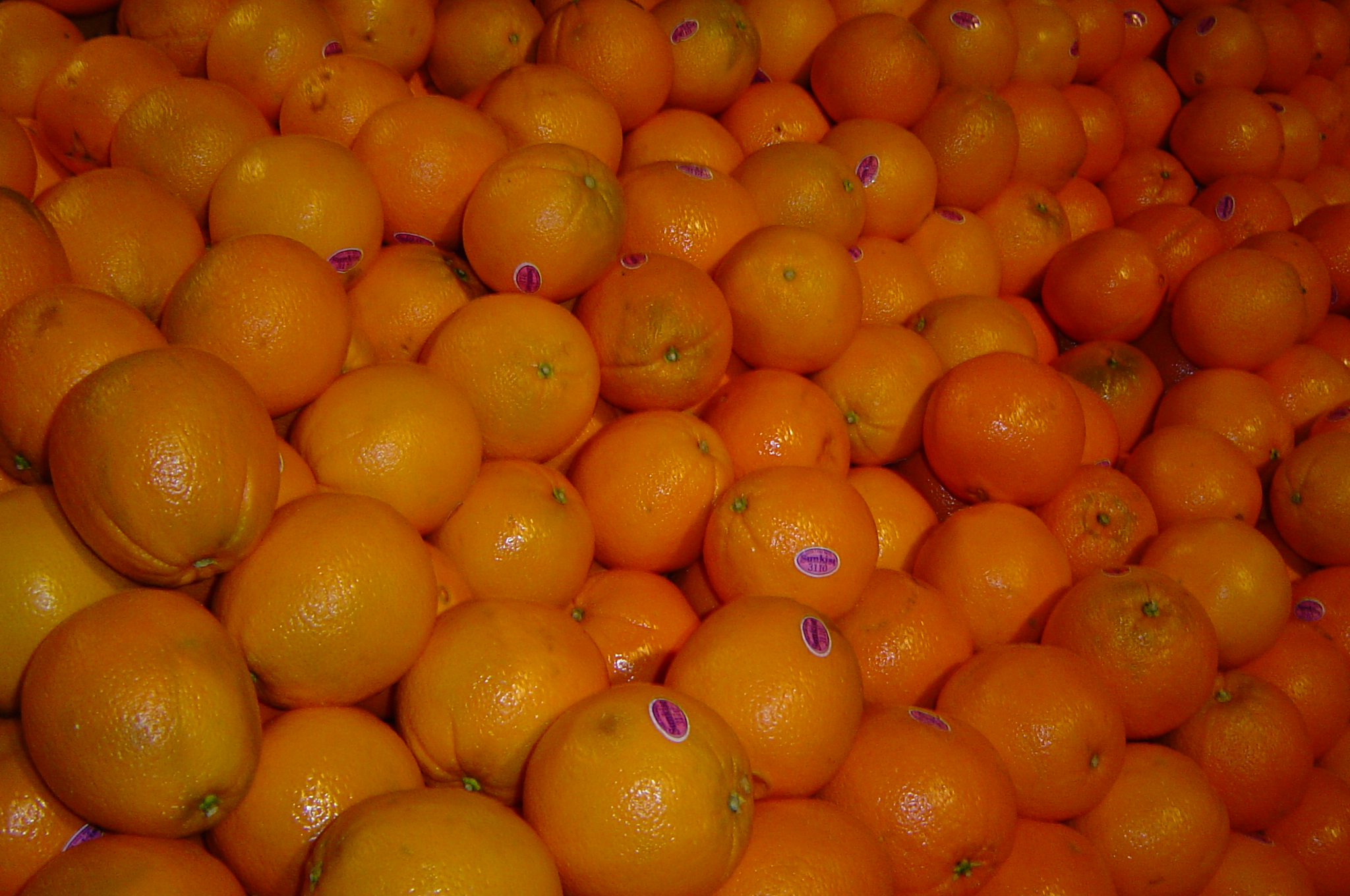- Cara cara navel
taxobox
name = Cara Cara Navel Oranges
image_caption = Cara Cara Navel Oranges
regnum =Plantae
unranked_divisio =Angiosperms
unranked_classis =Eudicots
unranked_ordo =Rosids
ordo =Sapindales
familia =Rutaceae
genus = "Citrus "
species = "C. sinensis"|The "Cara cara" navel, or "red navel" orange is an early-to-midseason navel orange believed to have developed as a cross between the Washington navel and the Brazilian Bahai navel [http://books.google.com/books?id=tsaCbFmmiOoC] Allen Susser, The Great Citrus Book: A Guide With Recipes] . Discovered at the Hacienda de Cara Cara in Valencia, Venezuela in 1976 [http://www.citrusvariety.ucr.edu/citrus/caracara.html] UC Riverside, Cara Cara navel orange] , the parentage is apparently uncertain enough to occasionally warrant the distinction of a "mutation", with only the tree on which it was found--the Washington navel--being an accepted progenitor. Cara caras did not enter the U.S consumer produce market until the late 1980s [http://www.seattleweekly.com/food/blogs/voracious/2006/12/cara_cara_mia.php] Seattle Weekly, Cara Cara Mia] and were carried only by specialty markets for many years thereafter.Characteristics
Cara cara is a medium-sized navel. Noteworthy for its deep rosy interior, the flesh color is comparable to the red
grapefruit s, while exterior differences from more common navel are inconspicuous. Sweet and low in acid, the flavor is more complex than most navel varieties and has been described as evoking notes of cherry, rose petal and blackberry [http://www.ubcbotanicalgarden.org/potd/2007/02/citrus_sinensis_cara_cara.php] UBC Botanical Garden, Botany Photo of the Day] .eason
From the major growing regions, South African cara caras are ready for market starting in August, Venezuelan fruits arrive in October and Californian fruits make their seasonal debut in late November.
References
External links
Wikimedia Foundation. 2010.
